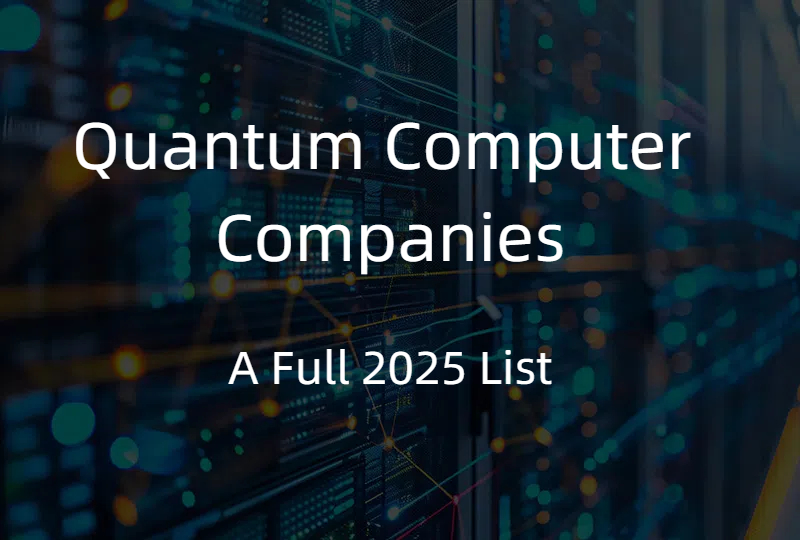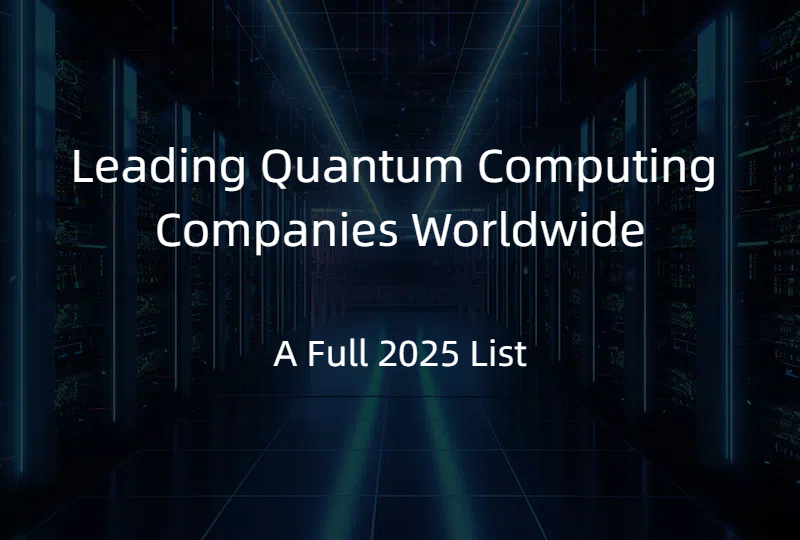The 2025 Nobel Prize in Physics: Quantum Tunneling in Circuits Brings the Quantum World to the Macroscopic Scale
2025.11.07 · Blog Nobel Prize in Physics 2025
The 2025 Nobel Prize in Physics has been awarded jointly to John Clarke of UC Berkeley, Michel H. Devoret of Yale University and UC Santa Barbara, and John M. Martinis of UC Santa Barbara and Qolab "for the discovery of macroscopic quantum mechanical tunnelling and energy quantisation in an electric circuit." This landmark recognition celebrates one of the most consequential discoveries in modern physics—that quantum mechanical phenomena, previously observed only at microscopic scales, can be demonstrated and controlled in macroscopic electrical circuits visible to the naked eye.
The prize carries a monetary award of 11 million Swedish kronor (approximately $1.2 million) shared equally among the three laureates, with the formal presentation scheduled for December 10, 2025 in Stockholm. This recognition comes at a particularly significant moment, as 2025 has been designated the International Year of Quantum Science and Technology, underscoring quantum technology's critical importance to contemporary science and economic development.
The Groundbreaking 1984-1985 Experiments
The foundation for this Nobel Prize rests on a series of meticulous experiments conducted in the mid-1980s at the University of California, Berkeley. Working in John Clarke's laboratory, the team consisting of Clarke (as lab director), Michel Devoret (then a postdoctoral fellow), and John Martinis (then a PhD student) designed an elegant yet revolutionary experiment that challenged fundamental assumptions about the scale at which quantum mechanics operates.
Their experimental system centered on a superconducting electrical circuit composed of two superconductors—materials that conduct electricity without any resistance when cooled to extremely low temperatures—separated by an ultra-thin insulating layer known as a Josephson junction. This configuration, no more than a centimeter in width, represented a macroscopic object: a system containing many billions of electrons acting collectively as a unified quantum entity.
The team constructed their circuit from niobium and lead, materials that become superconductors when cooled to temperatures just a few degrees above absolute zero (below -273°C or -459°F). In this superconducting state, an electric current could flow through the circuit with zero resistance and, crucially, zero voltage across the Josephson junction—a state described metaphorically as a "river that runs without friction."
Demonstrating Macroscopic Quantum Tunneling and Energy Quantization
The laureates' experiments revealed two remarkable quantum phenomena at the macroscopic scale. First, they observed quantum tunneling in their electrical circuit: the system could transition from its stable zero-voltage state to a state with measurable voltage without classical energy to make this transition. Instead of requiring sufficient energy to climb over a classical energy barrier, the macroscopic system could "tunnel" through the barrier—a purely quantum mechanical effect that had previously been studied only in atoms and subatomic particles.
As explained in the Nobel Committee's statement: "There is no advanced technology today that does not rely on quantum mechanics. The three laureates took quantum tunnelling from the microscopic world and onto superconducting chips, allowing physicists to study quantum physics and ultimately create quantum computers."
Second, the experiments demonstrated energy quantization in the electrical circuit. Rather than absorbing and emitting energy continuously as classical physics predicts, the system absorbed and emitted energy only in discrete amounts or quanta—precisely as quantum mechanics theory predicted. By carefully injecting microwaves to excite the system at specific frequencies, the researchers observed that the electrical circuit's energy levels formed a discrete ladder of quantized states, much like an atom's electron shells.
The significance of these observations cannot be overstated. Clarke reflected on receiving the award, stating: "To put it mildly, it was the surprise of my life...The basis of quantum computing relies to quite an extent on our discovery." Critically, the team showed that when they cooled their system below 50 millikelvin, the escape rate from the zero-voltage state remained constant—evidence that quantum tunneling was occurring, as thermal fluctuations alone could not explain the behavior at such cold temperatures.
The Josephson Junction: Gateway to Macroscopic Quantum Effects
Central to the Nobel Prize-winning discovery is the Josephson junction, named after British physicist Brian Josephson. This component consists of two superconductors separated by an insulating barrier approximately one nanometer in thickness—thin enough for Cooper pairs (pairs of electrons bound together that behave as bosons) to tunnel through the barrier at an appreciable rate.
The junction creates conditions where macroscopic quantum states can emerge. Rather than individual electrons behaving quantum mechanically, billions of Cooper pairs move collectively through the junction, creating a single macroscopic quantum state describable by a unified quantum phase. As explained by researchers at École Polytechnique: "A macroscopic superconducting circuit, composed of a considerable number of atoms and electrons, can therefore be described by an extremely elementary energy level diagram...as if the entire electrical circuit behaved like a single large atom with a single energy level."
This discovery established the theoretical and practical foundation for controlled manipulation of macroscopic quantum states—a capability essential for quantum computing development.
From Macroscopic Quantum Tunneling to Modern Quantum Computing Applications
From Fundamental Physics to Quantum Computing
While the 1984-1985 experiments were primarily investigations into fundamental quantum physics, their practical implications have proven extraordinary. The principles demonstrated by Clarke, Devoret, and Martinis form the theoretical foundation upon which modern superconducting quantum computing rests.
Superconducting qubits—the quantum bits used in today's leading quantum computers—directly utilize the Josephson junction principle that the laureates pioneered. These qubits leverage the quantized energy levels demonstrated in the Nobel laureates' experiments to encode quantum information. Companies such as Google, IBM, Microsoft, and SpinQ have all built quantum processors containing hundreds of superconducting qubits based on these principles.
Martinis, in particular, played a direct role in translating these fundamental discoveries into quantum computing applications. He led Google's quantum computing development team, which famously demonstrated "quantum supremacy" in 2019 with Google's Sycamore processor. More recently, in December 2024, Google announced Willow, a 105-qubit superconducting processor that achieved a major breakthrough in quantum error correction, where the error rate decreased as more physical qubits were added—a critical milestone for building large-scale, practical quantum computers.
Similarly, Devoret conducted foundational work on circuit quantum electrodynamics (circuit QED) at Yale University, developing the transmon qubit in 2002—a superconducting qubit design with decreased sensitivity to charge noise that became widely adopted by researchers worldwide. This qubit type now forms the basis of quantum computers at Google, IBM, and numerous research institutions.
How Superconducting Qubits Harness Macroscopic Quantum Tunneling
Superconducting qubits operate by encoding quantum information in superconducting circuits cooled to temperatures near absolute zero (typically below 20 millikelvin). The Josephson junction forms the heart of these qubits, creating a nonlinear inductance that enables fundamental quantum phenomena including superposition (where a qubit can exist in a linear combination of both 0 and 1 states simultaneously) and entanglement (where qubits become correlated in ways impossible to describe classically).
The key advantages of superconducting qubits include exceptional scalability—fabrication techniques adapted from classical semiconductor manufacturing enable multiple qubits on a single substrate—and remarkably fast gate operations occurring on nanosecond timescales. Recent superconducting quantum computers have achieved gate fidelities exceeding 99.9% (meaning quantum operations are performed with exceptionally high accuracy) and coherence times up to 100 microseconds, enabling increasingly complex quantum algorithms to be executed.
However, superconducting qubits face significant challenges. Decoherence—disruption of quantum states by environmental interactions—remains a major issue limiting computation time. Additionally, the requirement for extreme cryogenic temperatures adds substantial complexity and cost to quantum computing systems. Despite these challenges, superconducting qubits remain the most commercially advanced quantum computing technology currently available, with major technology companies and well-funded startups prioritizing this approach.
Broader Economic and Scientific Impact
The economic and scientific implications of the laureates' work extend far beyond quantum computing. According to the World Economic Forum, quantum technologies based on these principles—including quantum computing, quantum sensing, and quantum communication and security—could generate economic value between $900 million and $2 trillion by 2035.
Quantum computers built on superconducting qubits are being explored for diverse applications. In drug discovery and materials science, quantum computers can simulate molecular structures and chemical reactions that are intractable for classical computers—IBM and Mercedes-Benz, for example, are collaborating on quantum simulation for battery research. In finance and logistics, quantum computers promise to solve complex optimization problems where classical approaches require prohibitive computational time. In cryptography, quantum computers could potentially break current encryption standards, while simultaneously enabling development of quantum-resistant encryption methods. Artificial intelligence represents an emerging application area, with companies including Google, IBM, and SpinQ exploring quantum-enhanced AI for natural language processing and pattern recognition.
Beyond quantum computing, Josephson junctions have practical applications in quantum sensors capable of detecting minute magnetic fields with extraordinary precision. These sensors have found use in geophysics, medical imaging (magnetoencephalography for brain activity monitoring), and fundamental physics experiments like ADMX (Axion Dark Matter Experiment).
Historical Context and Predecessors
The Nobel Committee acknowledged that Clarke, Devoret, and Martinis' work built upon theoretical foundations laid by previous Nobel laureates. Anthony Leggett won the 2003 Nobel Prize in Physics for theoretical work on superconductivity and predicted that macroscopic quantum tunneling should be observable in superconducting circuits. Brian Josephson won the 1973 Nobel Prize for predicting the Josephson effect itself—the quantum tunneling of Cooper pairs across an insulating barrier. This lineage of recognition demonstrates how fundamental physics discoveries accumulate over decades, with each generation's work enabling subsequent breakthroughs.
The Global Quantum Computing Landscape in 2025
The recognition of Clarke, Devoret, and Martinis occurs amid unprecedented investment in quantum computing. In 2024, quantum computing startups attracted USD 2.2 billion in venture capital funding alone—quadrupling investment levels from five years earlier. By mid-2025, total equity funding exceeded USD 3.77 billion, with the first half of the year alone accounting for USD 1.25 billion—more than double the equivalent period from the previous year.
This investment reflects genuine commercial momentum. IonQ, utilizing trapped-ion quantum computing (a complementary approach to superconducting qubits), reported USD 20.7 million in revenue for Q2 2025, with full-year revenue projected at USD 82–100 million. Multiple quantum computing companies are pursuing aggressive hardware roadmaps: Fujitsu and RIKEN announced a 256-qubit superconducting quantum computer in April 2025 and plan a 1,000-qubit machine by 2026. IBM aims for quantum circuits with up to 7,500 gates by 2026 and quantum-centric supercomputers with thousands of logical qubits by 2033.
However, experts caution that despite remarkable breakthroughs, quantum computing remains in the research stage. Nobel laureate Frank Wilczek recently noted that "quantum computers remain in the research stage and classical computers will remain superior for the foreseeable future." The industry has transitioned from pure hype to demanding concrete applications and customer adoption, marking quantum computing's maturation into a serious technology development effort.
Conclusion
The 2025 Nobel Prize in Physics represents recognition of one of the most consequential discoveries in modern physics: that quantum mechanics operates at scales far larger than previously demonstrated, and that this macroscopic quantum behavior can be harnessed for practical technological applications. From the fundamental physics experiments conducted four decades ago, Clarke, Devoret, and Martinis catalyzed a revolution in quantum technology that continues to accelerate.
Their work exemplifies how curiosity-driven fundamental research, pursued without immediate practical application in mind, can ultimately transform entire industries. The superconducting circuits and qubits that form the basis of today's most advanced quantum computers exist as direct consequences of their discovery. As quantum computing and other quantum technologies continue their rapid development, the foundational achievements of these three laureates will remain central to the field. Their recognition comes at an opportune moment, validating both the scientific importance and the practical relevance of quantum technology to addressing humanity's most challenging problems.
Featured Content






